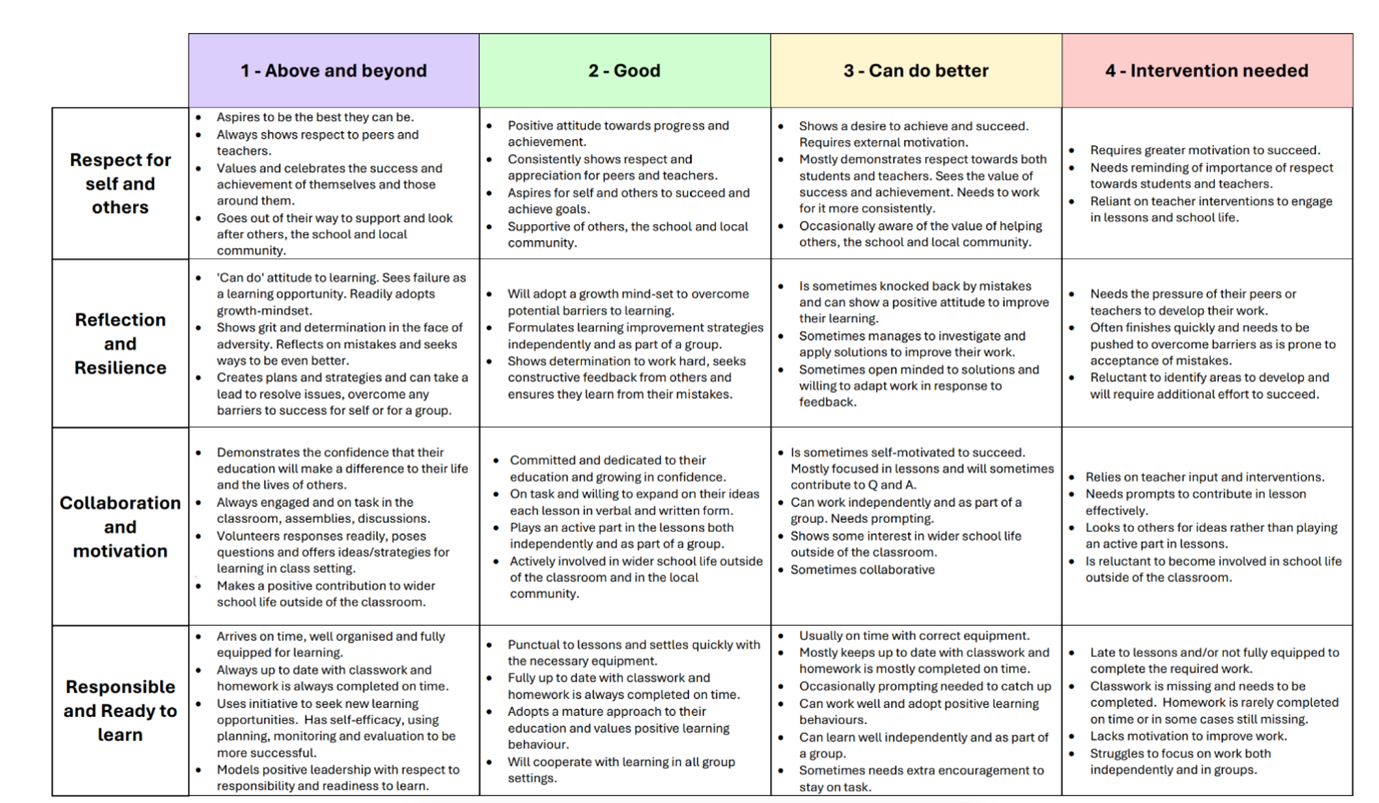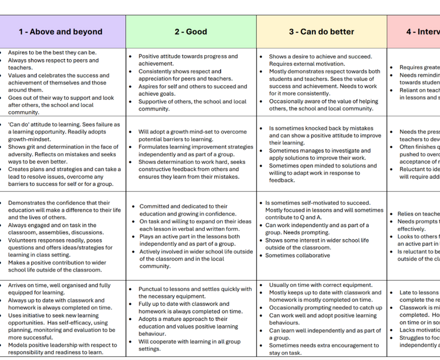- Home
- Curriculum
- Grading Structure
Grading Structure
Year 7, 8 and Core Subjects
In Year 6, students are tested in both English and Mathematics and receive standardised scores which range from 80 (lowest) to 120 (highest), these scores are then used by the Government to predict the grades all students should achieve at the end of Year 11. Whether the student achieves this grade or not will determine the progress they have made over the previous five years. All Saints Academy use these Year 11 predicted grades to create a student flight path which allows yearly targets to be generated. Every student is given a bespoke end of Year target grade that is extrapolated from this end of Year 11 outcome and a student’s progress is then measured against this every term. If a student has either struggled to meet or has exceeded their end of Year target grade, then discussions will take place between the Head of Faculty and classroom teacher regarding how best to get the student back on track or whether the target grade needs amending for subsequent years.
The core subjects at the academy are:
English & Mathematics
The progress students make at All Saints Academy is ‘very good’. In 2025, Year 11 students who achieved both a grade 4 in English and Maths was 89.8% with 68.4% achieving a grade 5 in both English and Maths, the local authority average for 2023 was 47% and the national average was 45%. Parents and students can monitor progress towards their yearly targets through the visual RAG rating system on Go4Schools and via a termly subject report.
If a student is:
- Purple in any subject, indicates that a student is on track to finish the year with a grade higher than their end of Year target grade
- Green in any subject, indicates that the student is on track to meet their end of Year target grade
- Amber in any subject, indicates that a student is tracking slightly below the standard required to meet their end of Year target grade
- Red in any subject, indicates that the student is tracking well below the required level to meet their end of Year target grade
For students that are identified as Amber or Red several interventions will be offered, these include but not limited to: teacher led interventions (P6 lessons), teaching/house assistant interventions and student mentoring. The student report will also provide an attitude to learning. The table below outlines the criteria associated with each attitude for the four learning characteristics (clicking on the table will open a larger image).

Government guideline on the 9-1 grading system

DFE: ‘We have designed the grading so that there are comparable points at key grades. The bottom of a grade 7 is comparable to the bottom of the old grade A, the bottom of a new grade 4 is comparable to the bottom of the old grade C, and the bottom of the new grade 1 is comparable to the bottom of the old grade G. We have been clear to employers, universities and others that if they previously set entry requirements of at least a grade C, then the equivalent now would be to require at least grade 4’.
A grade 4 is known as a ‘Standard’ Pass. The C/grade 4 minimum currency will be raised to grade 5 by the Government and this is known as a ‘Strong’ Pass.
The Grading structure for Years 7 and 8 for both core and non-core subjects
In 2015, the Government issued a report titled ‘Assessment without levels’, which permits schools to develop their own in-house grading systems to better address the unique needs of their students. As a result, we have revised the method of assigning target and current working grades for students in Years 7 and 8 in subjects classified as 'non-core'. At All Saints Academy, the 'non-core' subjects include: Art, Drama, Music, PE, Geography, History, Religious Education, Spanish, Science, Design Technology, and Information Technology.
The non-core subjects at Key Stage 3 provide foundational content that supports students' learning in the examination subjects they will encounter from Year 10 onwards. Due to the minimal inclusion of GCSE theory content in these years, assigning a GCSE grade to students in non-core subjects is not feasible. Conversely, in core subjects, students begin covering skills/content that will be assessed at GCSE starting from Year 7. This allows for the assignment of grades that more accurately reflect the student's progress toward their eventual GCSE performance.
The Pathways
Each student is assigned a Pathway for non-core subjects based on their Key Stage 2 grade. This initial placement is not fixed; for example, a student placed in Pathway 2 can be advanced to Pathway 3 if they surpass the skills required for Pathway 2 by the end of the year. The objective is for all students to achieve a Secure status on their designated Pathway by the conclusion of each academic year.
Each Pathway is divided into four sub-divisions: Emerging (Em), Developing (D), Secure (S), and Exceeding (E). This categorisation enables students to track their progress in each subject. These sub-divisions are aligned with the assessment criteria sheets developed by each subject department, which are accessible to students via Teams.
- Students targeted on Pathway 1 are likely to achieve a Grade 4 in their GCSEs in Year 11
- Students targeted on Pathway 2 are likely to achieve a Grade between a 4 and 7
- Students targeted on Pathway 3 are likely to achieve a Grade between a 7 and 9
The diagram below shows the pathways and their final outcomes in Year 11.




